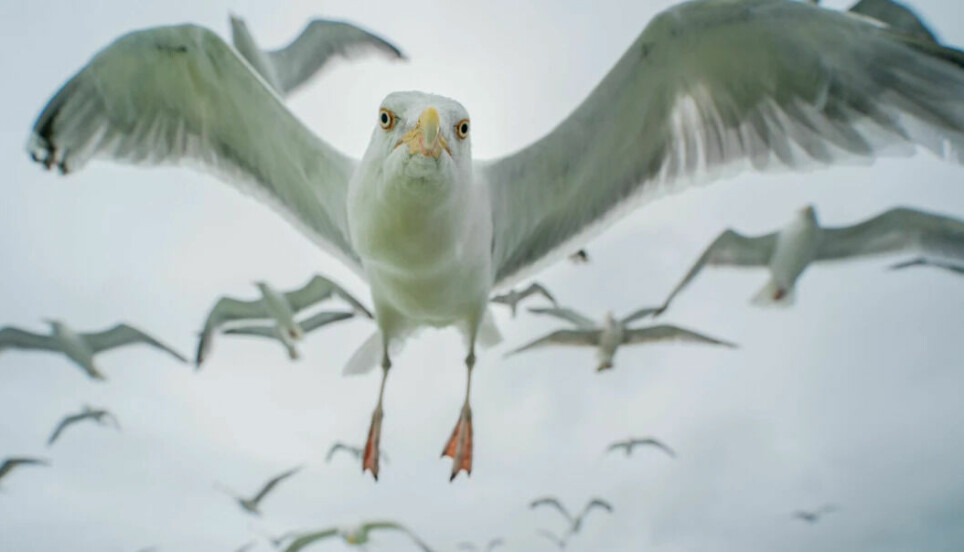
Seagulls have found safety in cities, but can this save them?
They bother those of us who reside in these cities but the seagulls have moved here because life at sea is too rough.
Troublesome and noisy summer guests or hungry and needy refugees?
Every summer the seagulls come to town. And every summer the debate on whether we should chase them away or give them housing and food arises again.
Tycho Anker-Nilssen, ornithologist at the Norwegian Institute for Nature Research (NINA), wants us to be patient with the seagulls.
“I hope people understand the situation these species are in,” he says.
Because things aren’t going well for our seabirds. From 2005 until 2015, 30 per cent of the seabirds on the Norwegian mainland disappeared, according to Environment Norway (link in Norwegian). Of the seven seagull species that lay eggs in Norway, five are in danger of extinction.
On the coast, the seagulls have many enemies: sea eagles, minks, otters and foxes. People and boats disturb nest sites. And the seagulls struggle to find enough food in the sea.
As a result, more and more of them are moving to the cities. It is safer for both eggs and chicks.
“If you look at a city from above, the roofs almost look like an archipelago. There are no minks and few cats. The roofs are ideal haunts for seagulls,” says Svein-Håkon Lorentsen. He is head of research at NINA.
But we humans don't quite know how to relate to our new neighbours.
A small chick in a sea of humans
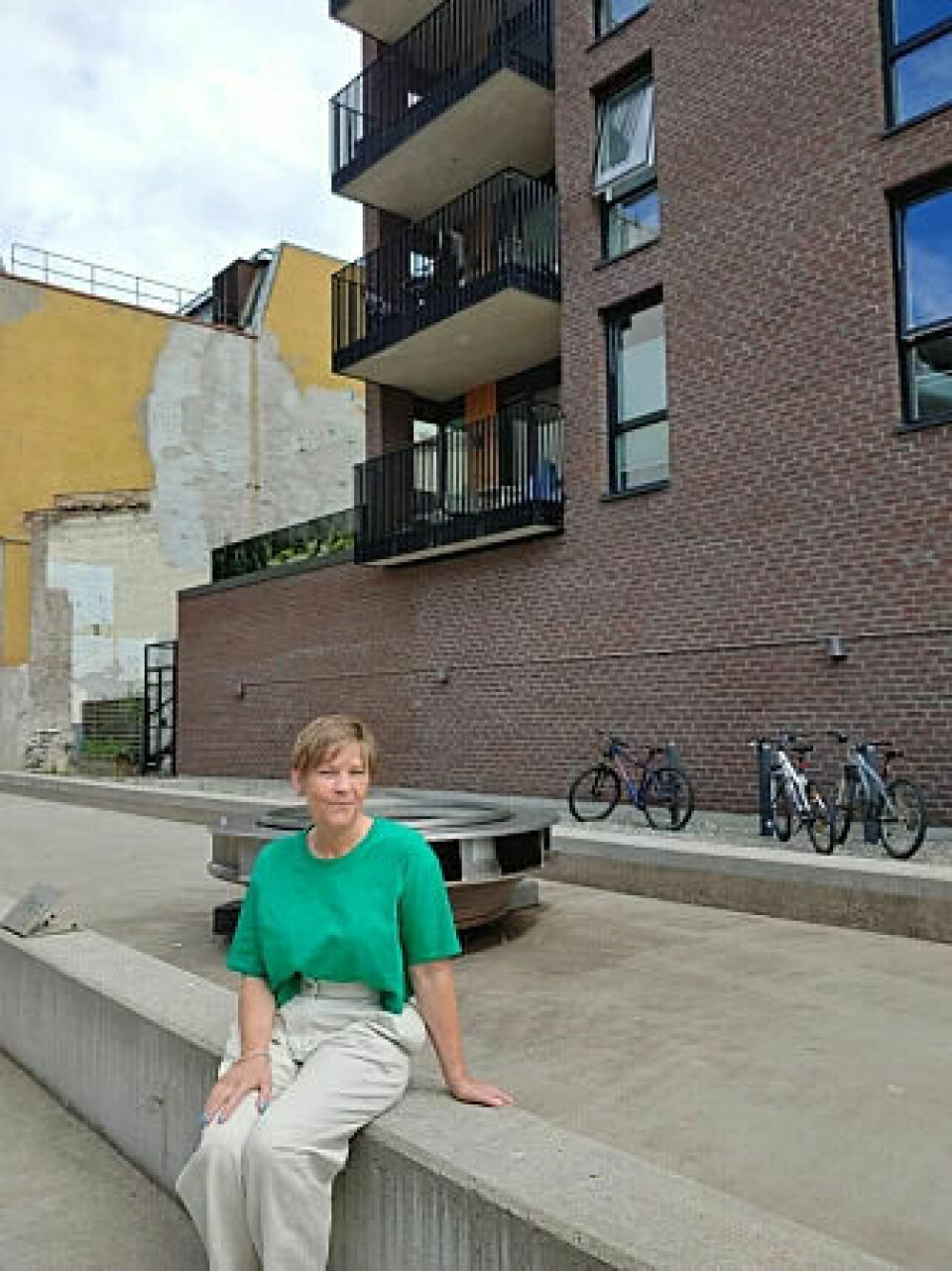
In Kværnerbyen, a district in Oslo with dense blocks and lots of people, a young seagull suddenly appeared.
“The chick walked around the square down here for several weeks. It chirped and chirped,” Britt Olsen, who lives in Kværnerbyen, says.
It was difficult to know whether to intervene or leave it alone.
Pelle Wickstrøm, head of the voluntary organisation Fuglehjelpen (bird help), receives many calls about seagull chicks from worried inhabitants.
“Leave them alone,” Wickstrøm urges. “It is important that people learn that baby birds are not abandoned, even if the parents are not around.”
Angry parents
In Kværnerbyen, the seagull parents watched from the air. If people got too close to the chick, they screamed loudly and incessantly.
“The noise was absolutely terrible, even at night. They drowned out both the car traffic and the television,” Britt Olsen says.
The noise is one of the reasons why seagulls are unpopular neighbours.
Immediately after hatching, the young leave the nest. For three to four weeks, they stay on the ground, while parents hunt for food and look after them.
“Seagulls can be aggressive when their young ones are small. Seagull chicks are not naturally afraid of anything, so the adult birds will protect them. But even if they dive towards you, they usually don’t make impact,” Lorentsen tells sciencenorway.no.
He believes people must get used to and accept that the seagulls have become part of the cityscape.
“The noise from the seagulls is no worse than noise from traffic and the rest of the city,” Lorentsen argues.
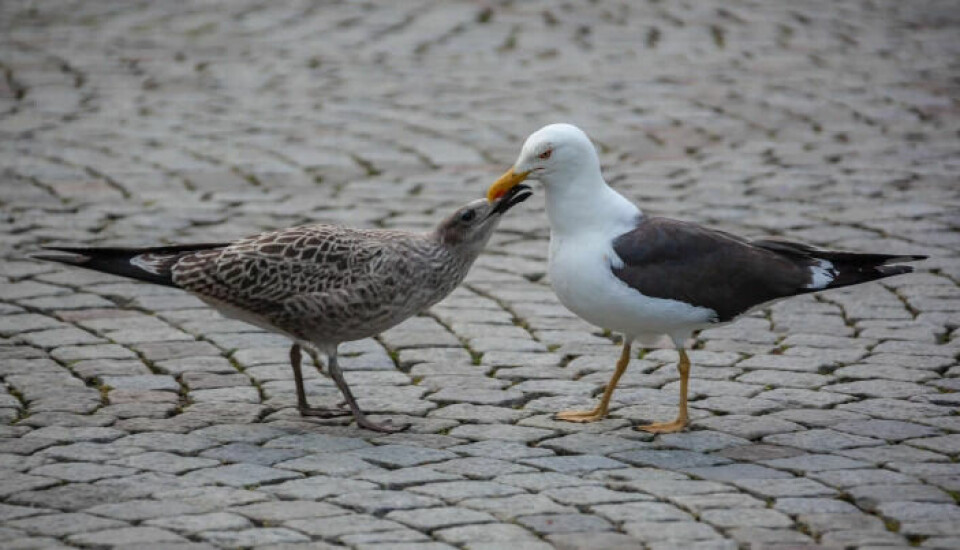
Corrosive bird droppings
The highly corrosive seagull droppings can ruin cars, boats, facades and statues, the Norwegian Institute of Public Health writes on its website (link in Norwegian). And with more and more seagulls in the city, the problem is increasing.
But seagulls in the city are not a new phenomenon, and perhaps tolerance was greater before.

“I grew up in Tønsberg, where there was no fuss if the seagulls made a mess. Urban environments today are much more sterile than what we had 40-50 years ago,” Tycho Anker-Nilssen says. “It's not just the seagulls that have moved the boundaries, we humans have too.”
When too many seagulls flock to the cities, there is not enough food for everyone. Some of them move on – to towns and cities that have not had seagulls before.
But it is not a permanent change of address.
Leave in July
The seagulls start arriving in April. They lay eggs and incubate them for a month. It is a quiet period, according to Lorentsen.
Then the chick hatches, and the parental squabble begins.
From mid-July, when the young can fly, the seagulls disappear from the cities. They go to the coast, out to sea or south to warmer countries. The noise is over for this time. Almost.
“Some seagulls can stay in the cities during winter. Especially in Bergen and Stavanger, where there is water close to the cities, and in Trondheim where many people feed the them,” says Lorentsen.
Too little food in the sea
In the cities there are many sources of food, unlike on the coast.
“Nature is not stable. It moves in cycles from decade to decade. Currently there is little plankton in the sea, and this has ripple effects for many populations,” explains Anker-Nilssen.
Changes in the climate do not make matters better.
“Global warming comes on top of the natural fluctuations. It will be an additional challenge for the seagulls,” he says.
In the cities, seagulls eat food scraps on the streets or at outdoor restaurants. They find insects, earthworms, berries and fallen fruit.
In addition, humans provide them with food.
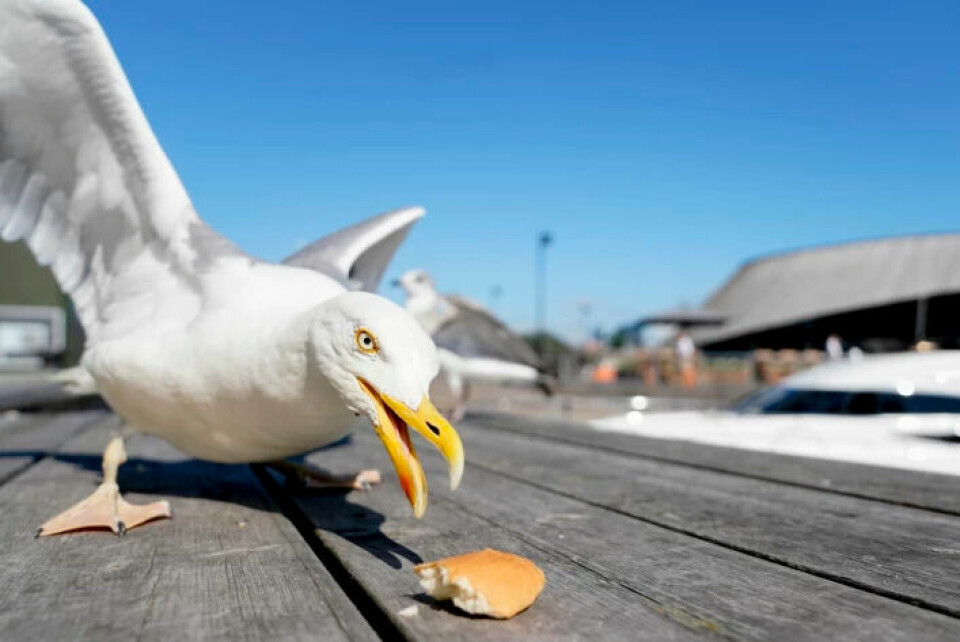
Does city life help seagulls?
Both eggs and chicks are safer in the city, but does city life improve the overall situation for seagulls?
Nobody knows.
The Seapop program was started in 2005 with the aim of monitoring and mapping Norwegian seabirds. Tycho Anker-Nilssen is part of the steering group.
“We have good knowledge of the seabirds along the coast. We follow a representative selection of birds and look at changes in the marine environment,” he says.
But they do not have the responsibility or resources to monitor seagulls. Neither does anyone else.
In 2016, the project Bymåker (City seagulls) attempted to map how many seagulls nest in the cities. That summer they asked people all over the country to report seagull nests.
The project did not provide the overview the researchers had hoped for. They received too few registrations.
“It could have gone better,” says Tycho Anker-Nilssen.
“We do not have accurate figures on the populations of seagulls in the cities,” Lorentsen says.
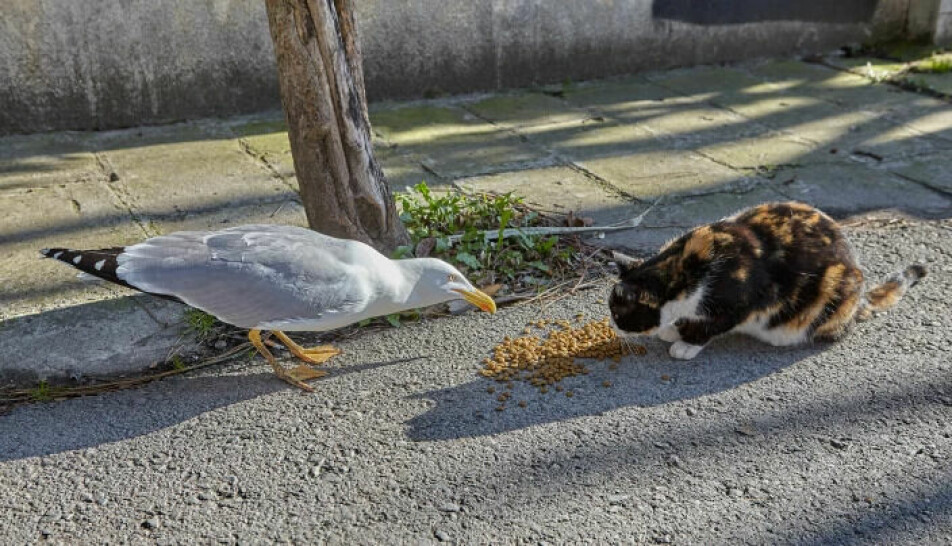
Not enough eggs
The challenge in cities is to count the nests on rooftops. This would require permission from the landowners and different technology than the monitoring of the coastal birds.
Museum Stavanger believe they have a solution. Recently, NRK, the national Norwegian broadcaster, reported that a new project is underway. Ornithologist Alf Tore Mjøs is testing out drones in a district of Stavanger.
Although the data is lacking, researchers at NINA do not believe that the increase in the number of seagulls makes up for the decline on the coast.
They do, however, know more about the endangered black-legged kittiwake species, which stays in the harbours and gathers food at sea.
“The number of kittiwakes in the harbour areas has increased, but even there the population is declining dramatically. They are unable to produce enough eggs to keep the population consistent,” says Anker-Nilssen.
Svein-Håkon Lorentsen is not optimistic either:
“Having a sanctuary in the cities helps the seagull species that are returning, but it probably does not offset the decline on the coast,” he says.
It's urgent

“Many populations are declining so quickly that we can hardly keep up with developments. It is urgent to get measures in place,” says Tycho Anker-Nilssen.
Measures to increase populations will require resources. But not all politicians support the seagulls' strategy for safe nests and enough food.
Last year, Gunnar Pedersen, municipal council representative for the Conservative Party, suggested giving birth control pills to the seagulls in Tromsø, according to NRK (link in Norwegian). He also believed that all nests should be removed from municipal buildings.
Jo Anders Auran, senior adviser at the Norwegian Environment Agency, understands that the seagulls can be a problem, but in the summer it is too late to do anything about it, because both eggs and nests are protected.
“Politicians propose to remove, shoot or poison seagulls, but if they do not want the same invasion next year, they must put measures in place before the birds arrive. We encourage this every autumn,” Auran tells sciencenorway.no.
“Everyone has a responsibility, but the municipalities have the tools”
There are many people who work on the coexistence between seagulls and humans: the Norwegian Food Safety Authority, the Norwegian Environment Agency, the Norwegian Institute of Public Health, the wildlife councils, the police and voluntary organisations.
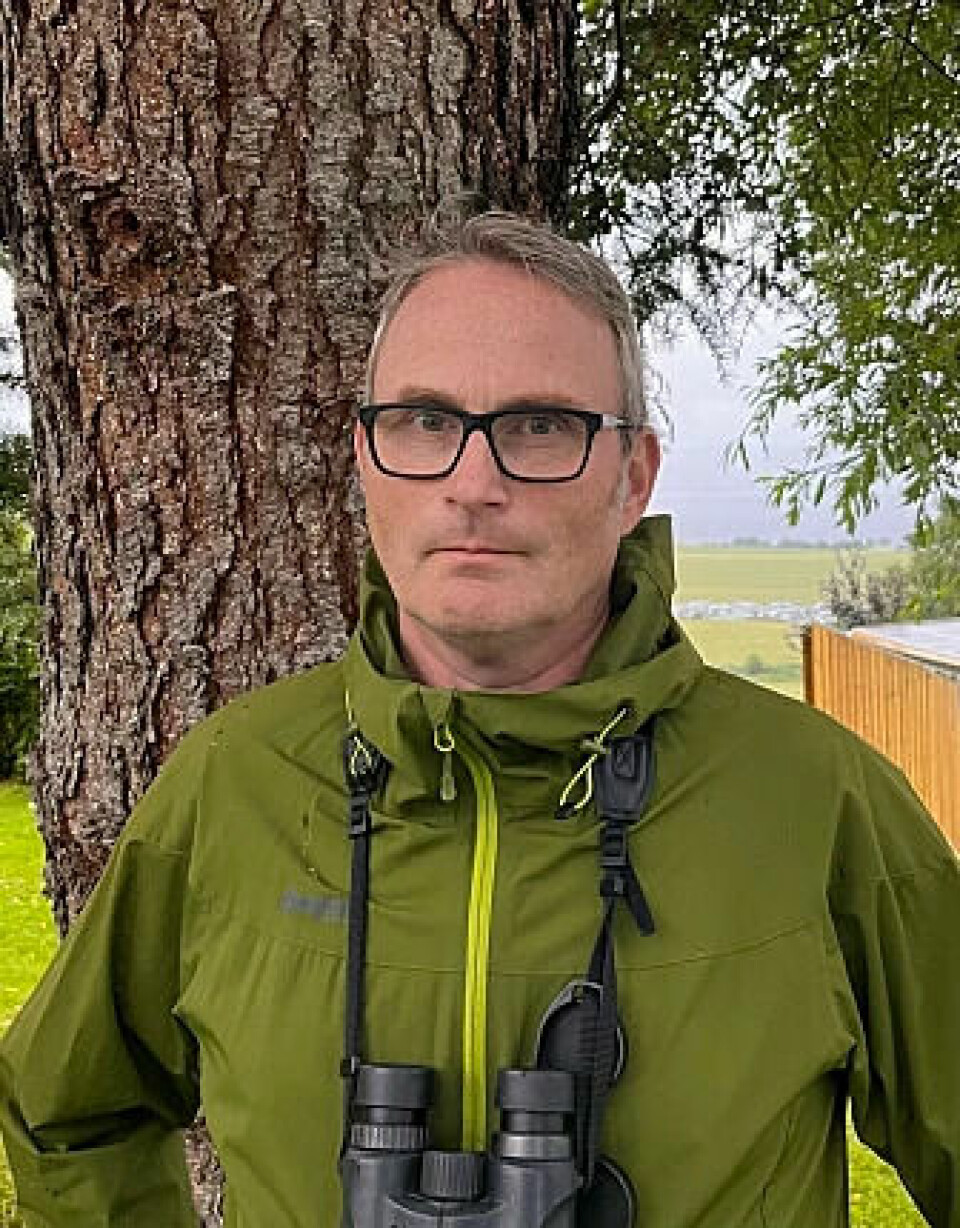
“There are many cooks and a lot of mess. Everyone wants to be an expert. But the legislation is clear. No state or municipal institution has responsibility alone but must take care of nature together. This also applies to the seagulls,” Auran says.
The municipalities sit on the means, according to Auran.
They can, for example, introduce a feeding ban.
“Many people like to feed seagulls, and some find it amusing when they take food straight from their hands. This teaches the seagulls to dive at people,” Svein Håkon Lorentsen says.
The municipalities can also increase the cleanliness of the streets and collect the bins more often, according to Auran. Municipalities and farm owners can put up fences to keep seagulls away from former nest sites.
“We receive a number of applications to remove nests every year, for example in the ventilation areas of nursing homes. But noise in itself is not grounds for removal, nor is the chance of getting pooed on by seagulls,” says Auran.
They are here to stay
“You hope they won’t come back next year, but the seagulls will return,” says Auran. “We have to accept having nature so close to us, even if it is new and annoying.”
The researchers agree on that:
“We have to put up with the noisy seagull only for a few weeks in the summer, and rather be happy that we have wildlife so close to us,” says Lorentsen.
———
Translated by Alette Bjordal Gjellesvik.
Read the Norwegian version of this article on forskning.no
































